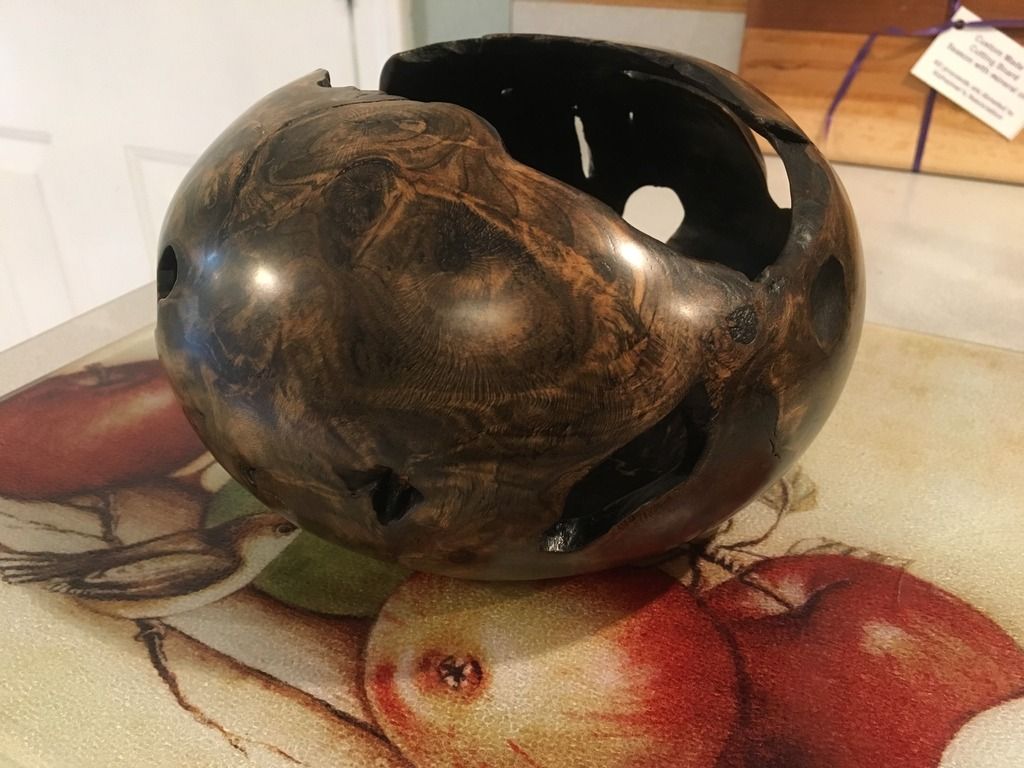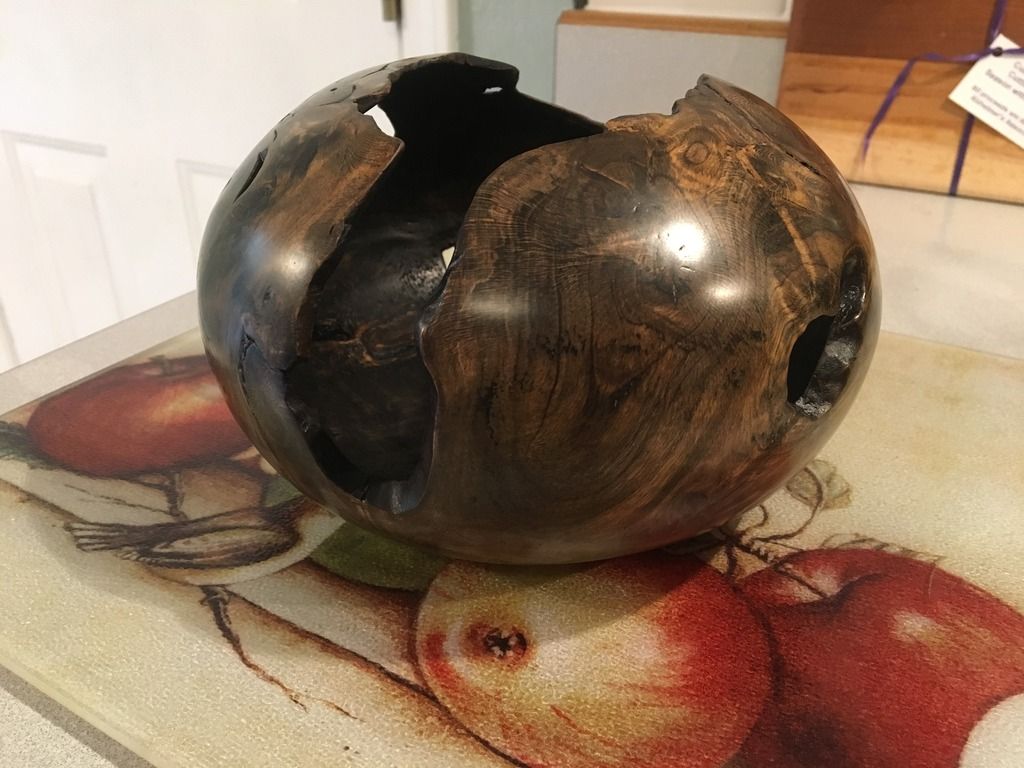I posted a couple of pics the other day asking for some advice on sanding the inside of my holly stump hollow form. I have that part licked, but despite the swirling grain, inclusions and holes the wood just looks dull and uninteresting. There's no depth to the grain and no chatoyance. I had the bright idea to treat it with some black aniline dye and sand it back to pop the grain, but now it just looks gray and uninteresting, plus the tearout is accented - not all in a bad way, but I still have some sanding to do. I'm going to sand it back a bit more and hope the gray lightens up some, but I don't know what else to do to really bring out the character of the wood as it really doesn't have any depth.
I think my first step is to get rid of the gray color. I don't think it goes very deep, but is there a way to bleach it or dissolve it?
As for the final treatment I had planned to give it a few coats of DO and buff to a satin finish, but what what would y'all do? Dye it a more interesting color? Bleach it? Strategic inlacing to fill some of the smaller voids/inclusions? Maybe a gloss lacquer finish instead?
This is before sanding and black dye:
This is after sanding and dye:
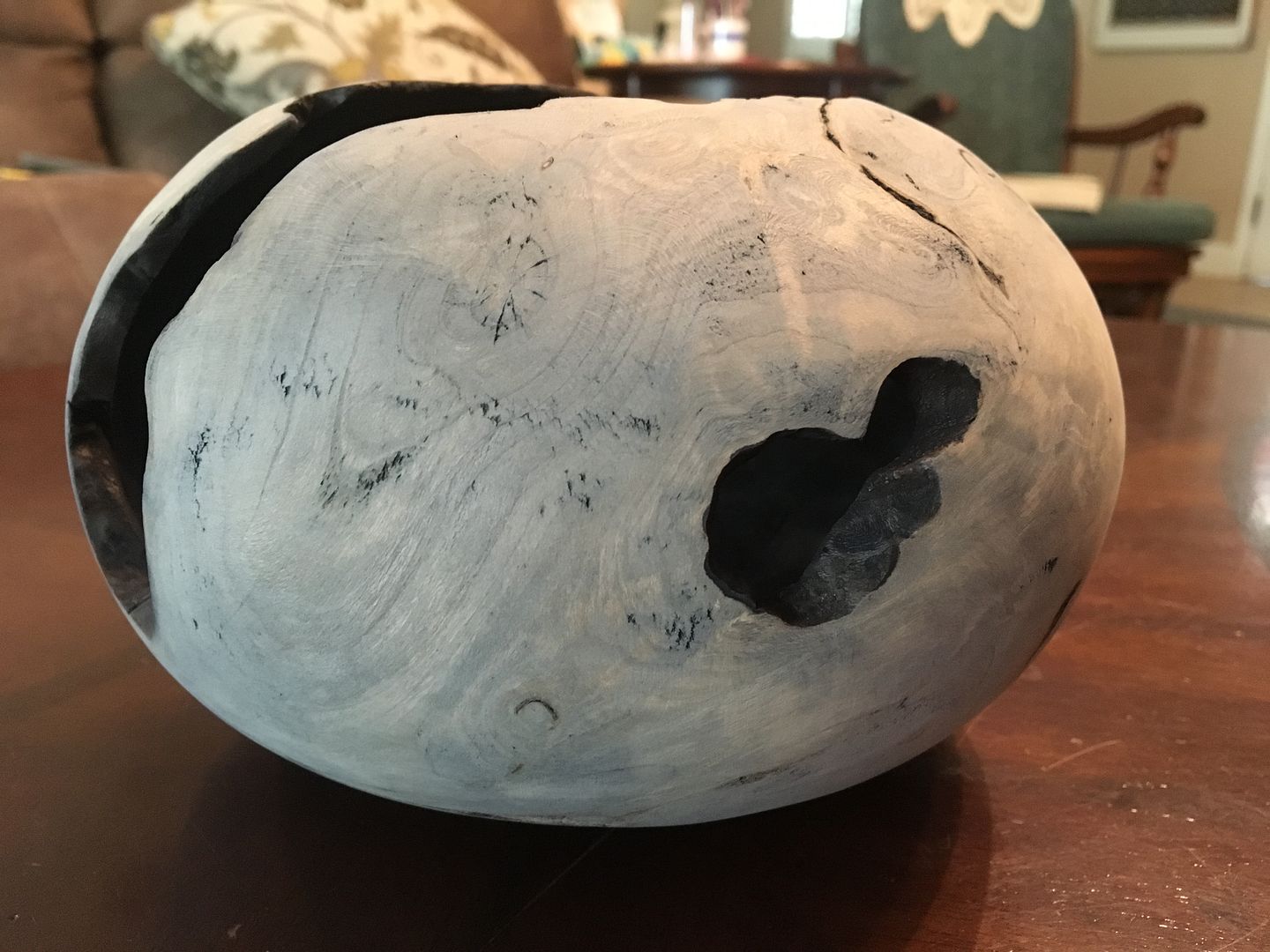



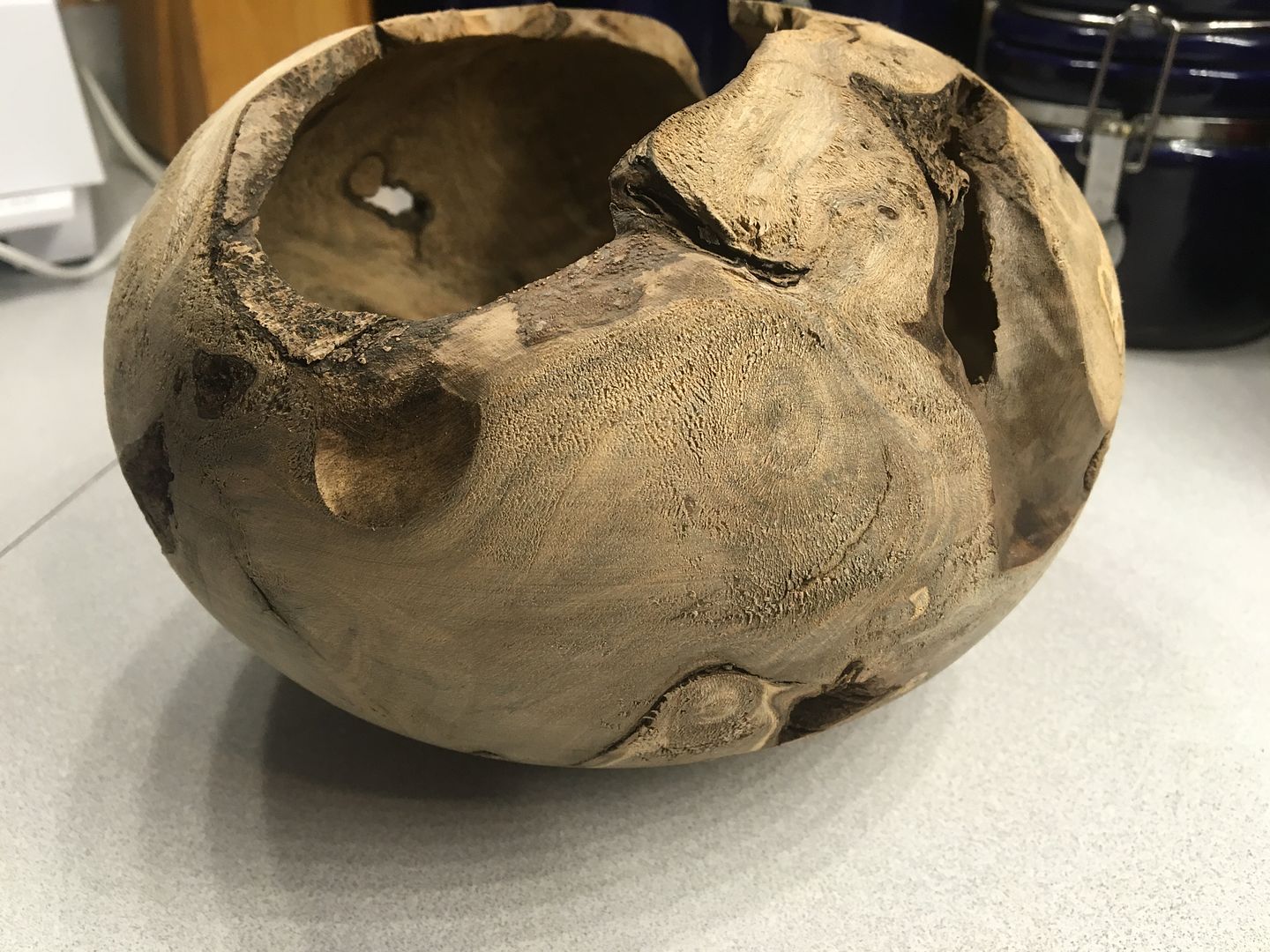

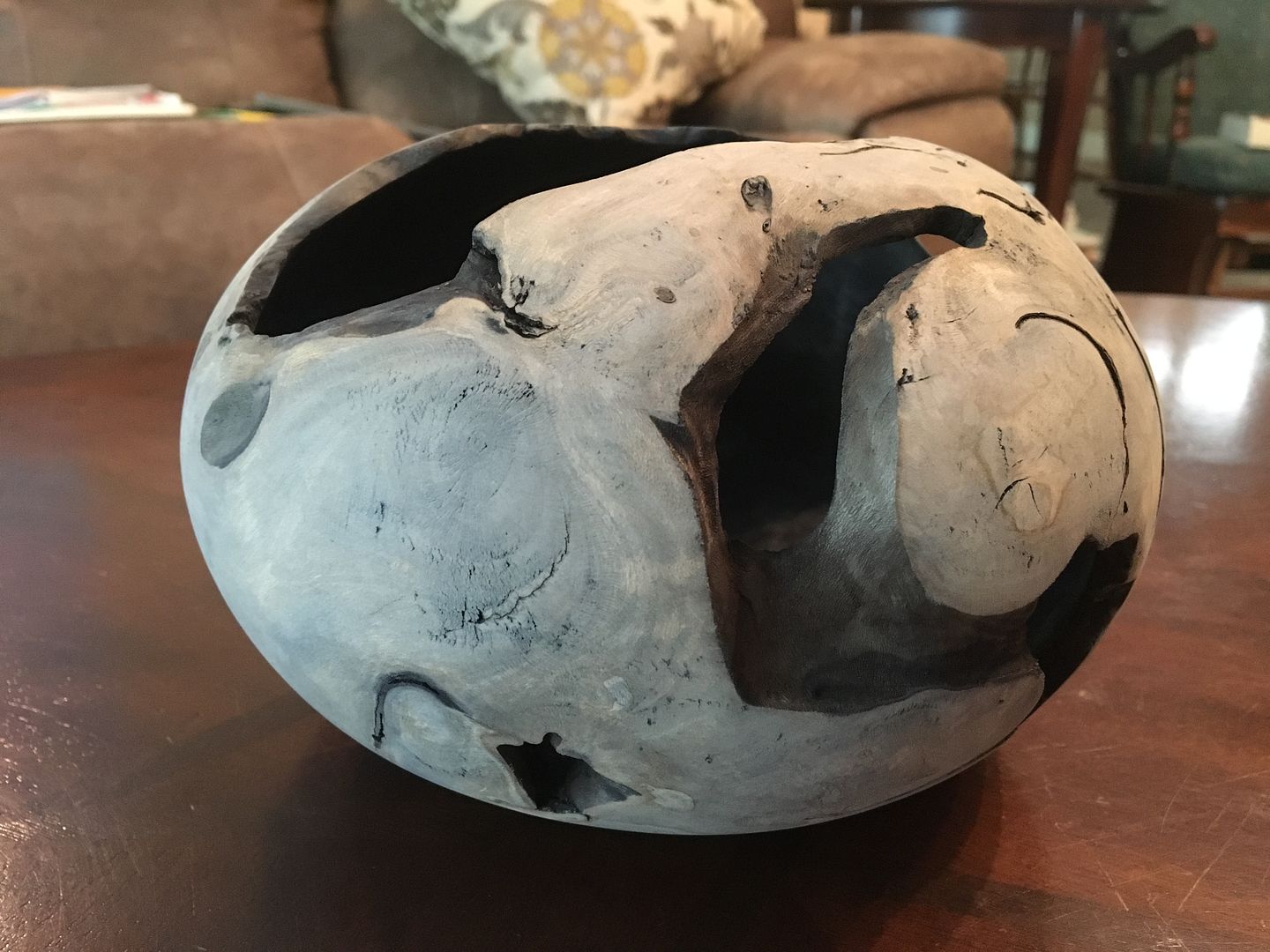
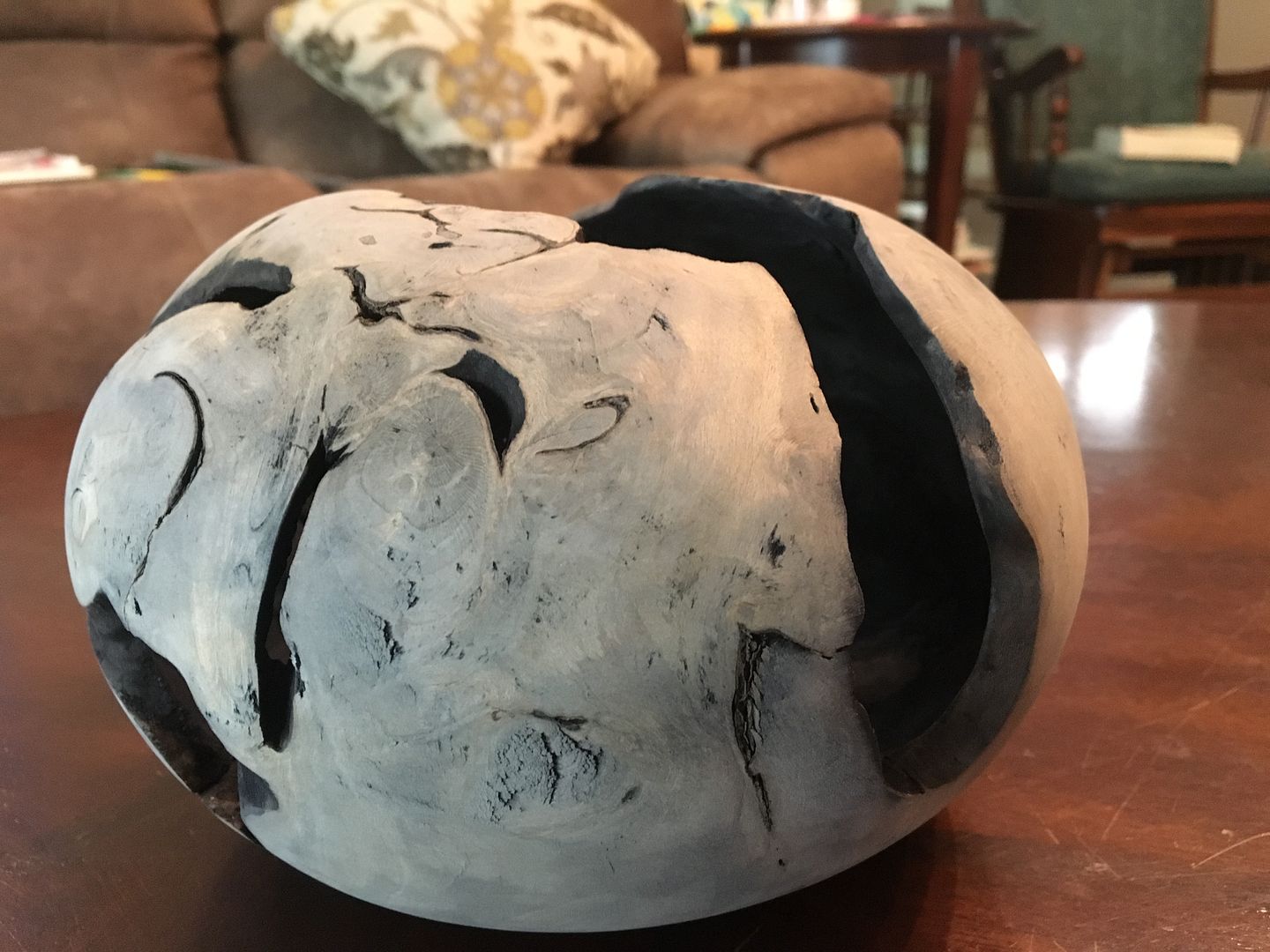

 Reply With Quote
Reply With Quote

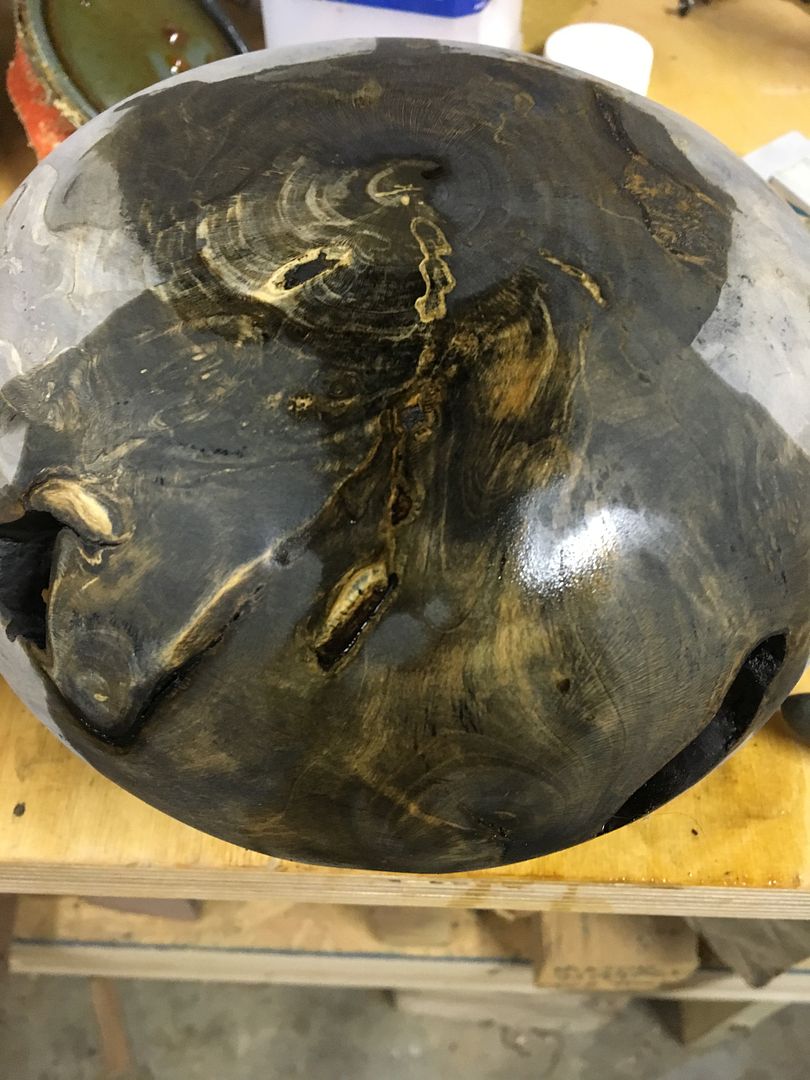
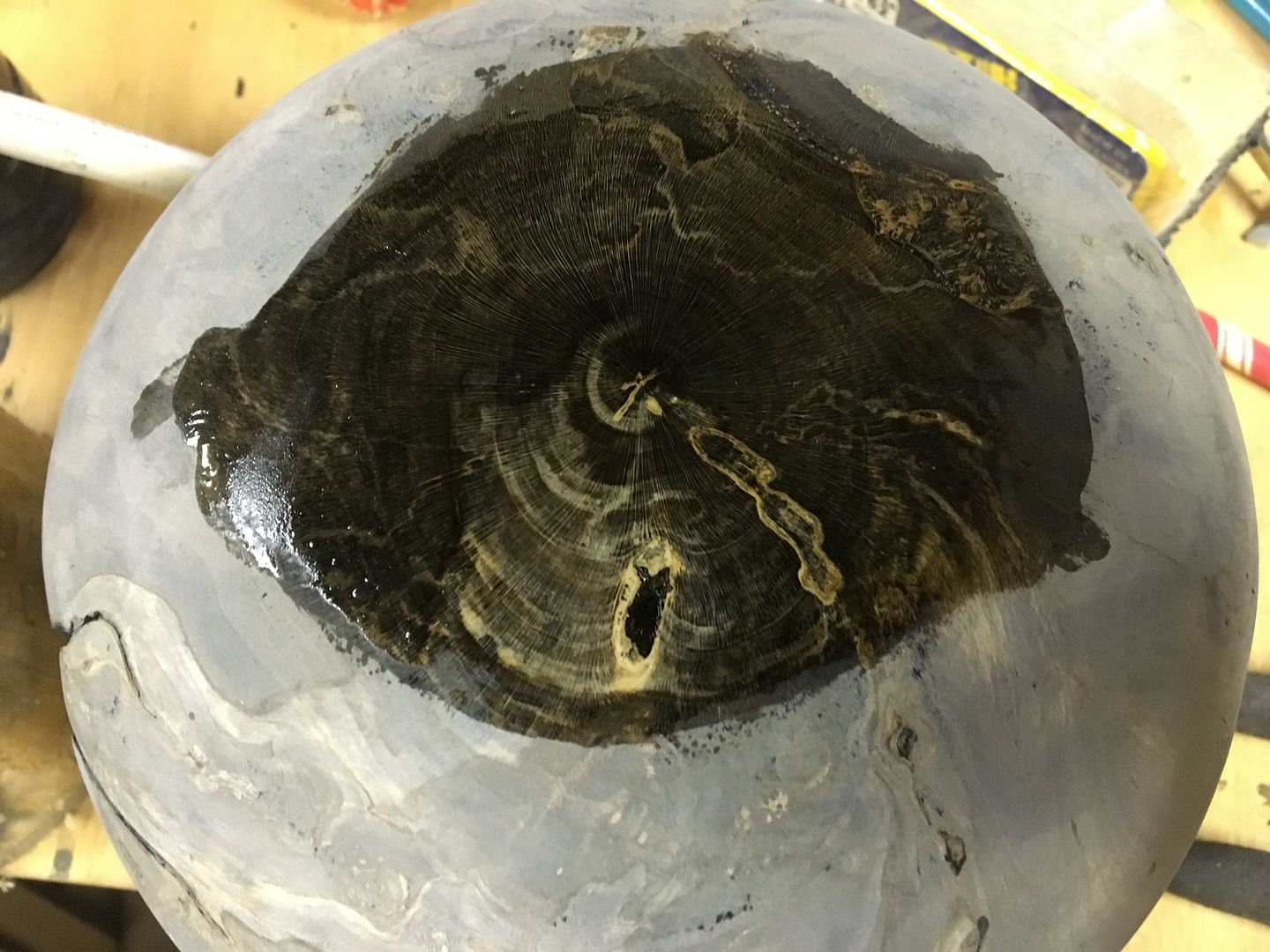



 I haven't cracked the other one open yet - wanted to see if it was worth the effort first. Should be able to get 2 3 blanks out of the other stump. May invest in a carbide hollowing tool before I tackle that one though. Even my Thompson gouges dulled within seconds hitting all the grit inside the wood. Took way too long, but was worth it.
I haven't cracked the other one open yet - wanted to see if it was worth the effort first. Should be able to get 2 3 blanks out of the other stump. May invest in a carbide hollowing tool before I tackle that one though. Even my Thompson gouges dulled within seconds hitting all the grit inside the wood. Took way too long, but was worth it.

